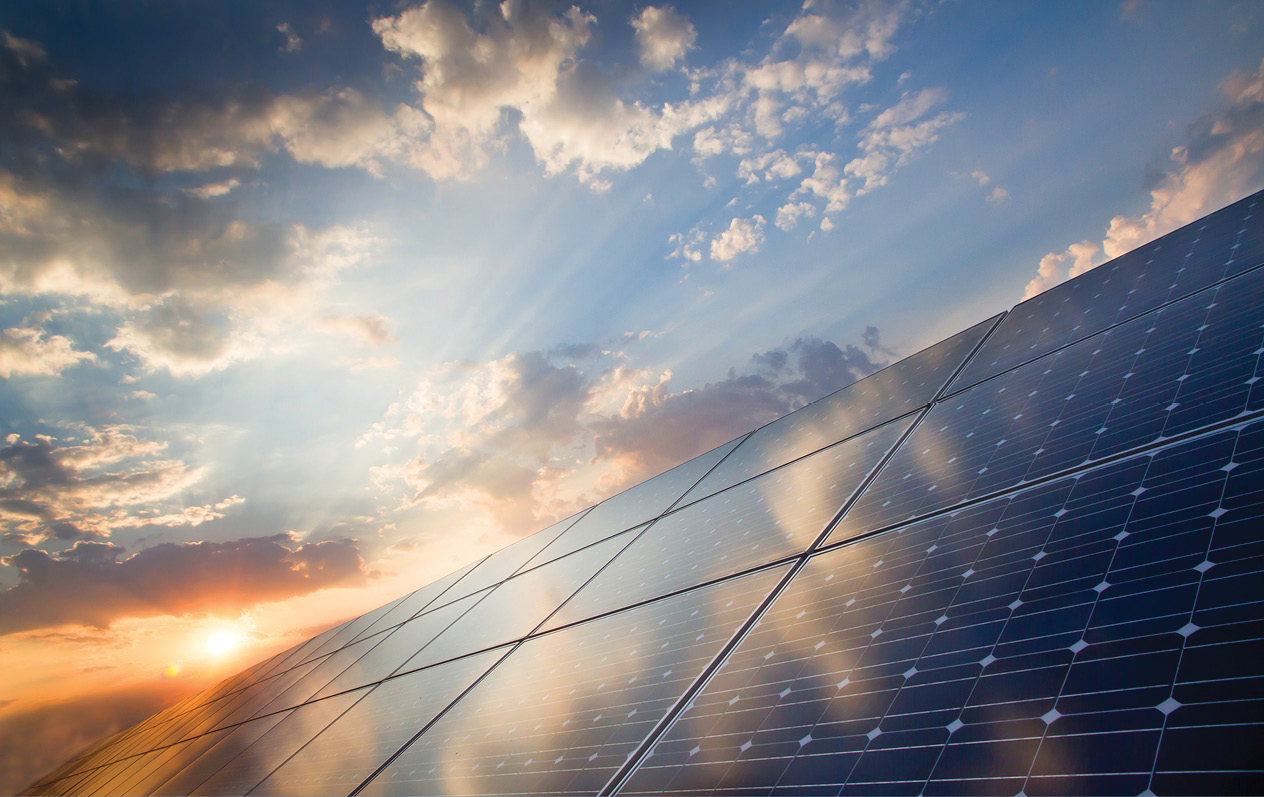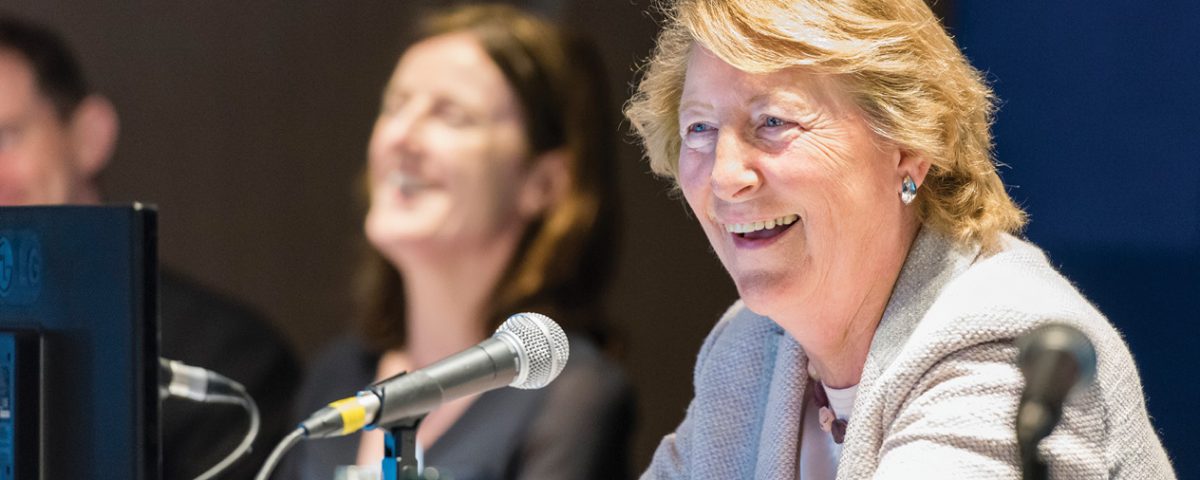
Irish researchers advance cutting-edge solutions for a low carbon energy system
9th November 2016
Closing the loop
9th November 2016De-carbonising energy: an EU Commission perspective


Europe is fundamentally reviewing all of its energy-related legislation so as to make the sector much more streamlined and joined-up from a Brussels’ perspective, according to Marie Donnelly, Director General of the EU Commission’s DG Energy.
The review of energy legislation “should make all of the regulations much more workable and relevant given the changes that are coming from a climate change perspective,” Donnelly told delegates at the Energy Ireland conference.
“The work is a direct follow-on from the commitment made in 2015 by the EU to establish a European Energy Union.”
Donnelly confirmed that the strategy, to this end, comprises five dimensions. These are:
- diversifying Europe’s sources of energy and making better, more efficient use of energy produced within the EU;
- developing a fully integrated electricity market. This will entail using interconnectors which enable energy to flow freely across the EU – without any technical or regulatory barriers;
- consuming less energy in order to reduce pollution and preserve domestic energy sources. This will reduce the EU’s need for energy imports;
- renewing the EU Emissions Trading System, espousing the COP-21 deal for climate change reached in Paris and encouraging private investment in new infrastructure and technologies; and
- supporting breakthroughs in low-carbon technologies by coordinating research and helping to finance projects in partnership with the private sector.
“All of this will help create a new dynamic within the energy sector,” said Donnelly.
“A key priority for the EU is addressing the targets set out in the 2030 Climate Energy Framework. These are: a 40 per cent reduction in greenhouse gas emission levels, from 1990 levels; a 27 per cent share for renewables within the total energy mix; and a 27 per cent improvement in energy efficiency levels. After 2020 these will be binding EU targets, not national.”
The Commission representative pointed out that there is a grey area where the 27 per cent energy efficiency target is concerned.
“A key challenge will be that of improving energy efficiency within the residential sector,” she continued. “There is a total of 25 billion residential spaces within the EU, a very high proportion of which is residential in nature.
“The Energy Efficiency Directive places energy savings requirements on all EU countries’ buildings. This includes making central government buildings more energy efficient and requiring EU countries to establish national plans for renovating overall building stock.
“So we could end up with the scenario of the European Commission taking itself to the EU court if Brussels does not get its own house in order beyond 2020.” She continued: “We want to see home owners investing in energy efficiency measures. This will also help revitalise the construction sector.”
Donnelly said that a target of retro fitting 20 per cent of the EU’s existing residential accommodation had been established. She also confirmed that part of the Juncker fund will be used to facilitate the attainment of improved energy efficiency levels within the built environment.
“It’s all about providing smart finance to invest in smart buildings for the future,” she stressed.
“The investment community must also be made aware of the new opportunities that will develop in order to invest in energy efficiency. But the problem is that investors are not in a position to assess risk levels at the present time. This must change.”
She added that energy efficiency projects are often fragmented and relatively small-scale. As a result, they generate high transaction costs for lenders, a relatively high risk-perception from financiers and unclear underlying business cases for the corporate world. These factors explain the current under-investment in energy efficiency projects.
Donnelly further explained that the European Fund for Strategic Investments (EFSI) aims to make a difference to the availability of long-term financing for energy efficiency projects. In essence it will help de-risk energy efficiency operations, up-scale existing financial instruments and create specific investment tools that enable a pooling of capital resources and bundling of investment projects into larger portfolios.
Donnelly confirmed that the EU’s electricity markets will change over the coming years.
“This is a fundamental requirement given the diversity of new energy technologies now under development. The market must take account of the need to source more supply from renewable sources,” she added.
“As a consequence, the electricity market must become more flexible and adaptable. Consumers must be prepared to pay for supplies on a flexible basis and prices must reflect scarcity or over supply. All of this will have the effect of making electricity markets more complex in nature.”
Donnelly said that the creation of Europe’s internal energy market creates great opportunities for countries to work together to exploit the renewable resources at their disposal, thereby meeting their 2020 renewable energy targets. They can do this through the co-operation mechanisms set up under the Renewable Energy Directive.
She also pointed out that the rapid deployment of renewable energy already poses challenges for the electricity system, which needs to adapt to increasingly decentralised and variable production sources, including solar and wind.
“The electricity market must become more flexible and adaptable. Consumers must be prepared to pay for supplies on a flexible basis.”
The Commission representative believes that, in the future, the benefits of renewable energy must be exploited in a way which is to the greatest extent possible market driven. Increased flexibility for Member States must be combined with an increased emphasis on the need to complete the internal market in energy. Different national support schemes need to be rationalised to become more coherent with the internal market, more cost-effective and provide greater legal certainty for investors. Attainment of the European target for renewables would be ensured by a new governance framework based on national plans for competitive, secure and sustainable energy.
“Renewables must play a greater role within the heating and cooling sectors,” Donnelly explained.
“Cutting the energy consumed by heating and cooling in buildings and industry can be achieved through scaling-up the use of advanced construction and design techniques and high-performance insulation materials when renovating buildings.”
The European Commission believes that energy use can also be cut by providing better information and control of energy use with intelligent technologies. Energy can also be saved by upgrading heating and cooling equipment such as boilers to the latest, most efficient technologies. Other renewable heating and cooling technologies, such as biomass boilers and solar heating systems, cut the use of fossil fuels.
In industry, energy for heating and cooling can be saved with energy-efficient technologies such as combined heat and power units which produce both heat and electricity, and via energy management solutions and technologies.
“The EU is projecting that the use of renewables for heating and cooling will break through the 20 per cent barrier by 2020, exceeding 25 per cent by 2030,” said Donnelly.
It is the much slower pace of renewables’ uptake within the transport sector that gives Donnelly greatest cause for concern. She told conference delegates that current projections put the uptake of non-fossil fuel options within the sector at no more than 10 per cent by 2020, increasing slightly to possibly 13 per cent by 2030.
“It will be extremely difficult to get the transport sector to meet its greenhouse gas emission targets,” she added.
“The de-carbonisation of fuel is a key priority for the EU. To make this happen we need to encourage the use of green electricity and biofuels within the transport sector.”
